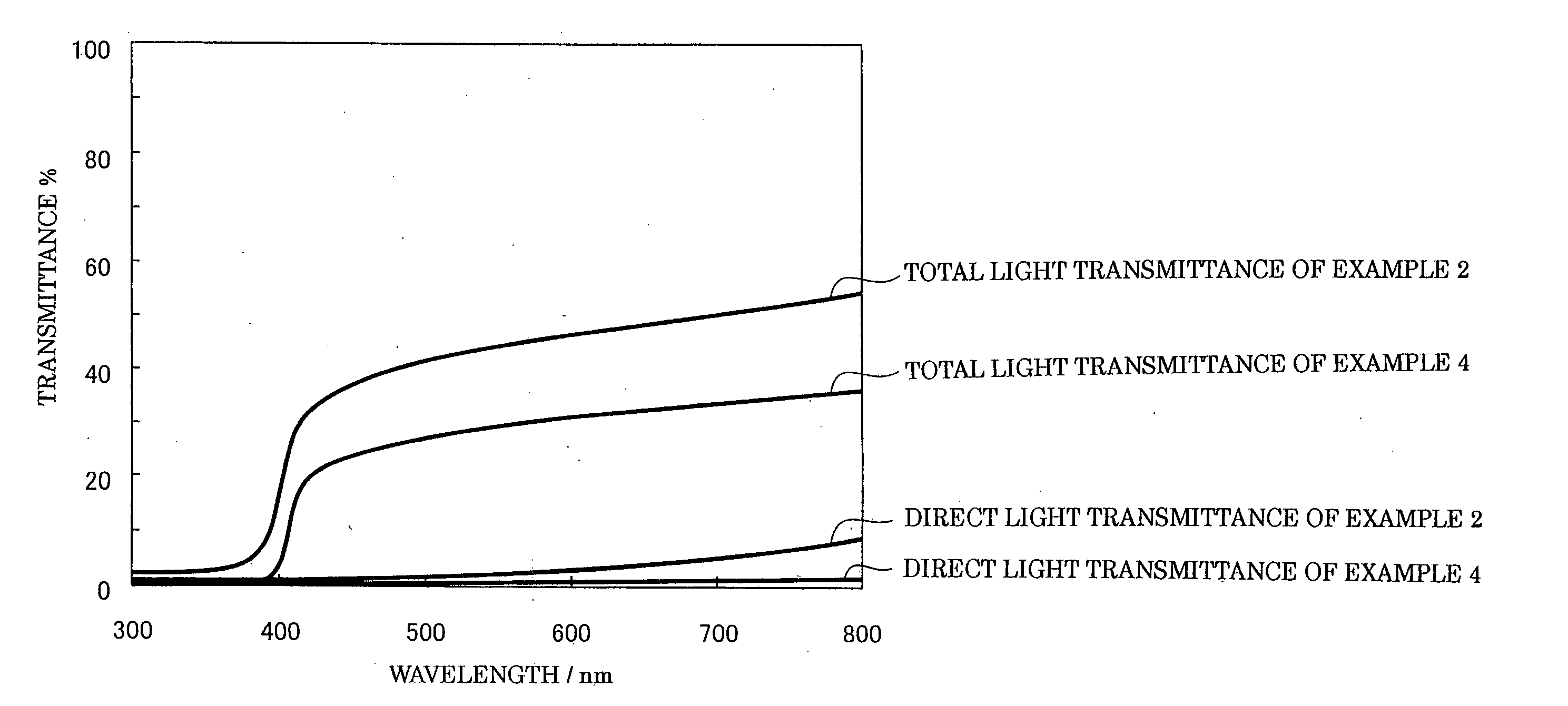Flaky particles, and cosmetic, coating material composition, resin composition and ink composition ezch containing the same
a technology of flaky particles and ink compositions, applied in the direction of body powders, silicon oxides/hydroxides, lanthanide oxides/hydroxides, etc., can solve the problems of poor usability, gritty feeling, and bad touch, and achieve the effect of high scattering effect of visible light and gloss too intensiv
- Summary
- Abstract
- Description
- Claims
- Application Information
AI Technical Summary
Benefits of technology
Problems solved by technology
Method used
Image
Examples
examples
[0033] Hereinafter, the present invention will be described in detail with reference to the following examples. It should be noted that the present invention is not limited to the following examples.
[0034] As for flaky particles prepared in the respective examples and comparative examples, the scattering of visible light was evaluated by the following means.
[Evaluation Method of Scattering of Visible Light]
[0035] Flaky particles are added into vinyl chloride resin coating material (Vinyroze clear GA00011, available from DAI NIPPON TORYO CO., LTD., the solvent is a mixture of toluene, xylene, and butyl acetate, the solid matter is 50% by weight, the refractive index of resin is 1.54) in such a manner that the content of the flaky particles in the resin is 10% by weight. After mixing and agitating them well, the mixture is applied to a substrate and then dried. The dried mixture is peeled off from the substrate so as to form a film of 100 μm in thickness. As for each thus formed fi...
examples 1-6
[0038] 670g of colloidal silica containing silica, i.e. silicon dioxide, of about 30% by weight (SILICADOL-30A, available from Nippon Chemical Industrial Co., Ltd., the particle diameter is 20 nm, the dispersion medium is water), 500 g of ethanol, and 500 g of water were mixed. Microparticles oftitania, i.e. titaniumdioxide (without dispersionmedium) of various particle sizes shown in Table 1 were added into the mixture in a predetermined amount and were dispersed uniformly using a beads mill so as to prepare silica sol solution containing titania microparticles. A stainless steel plate of a square 10 cm on a side was dipped into the solution and, according to the dipping method, the aforementioned solution was applied to the stainless steel plate in such a manner as to obtain a coating layer of 1.0 μm in dried state. After that, the stainless steel plate was entered into a dry kiln of 120° C. for 5 minutes to dry the coating layer. Then, the coating layer was peeled off by a scrape...
example 7
[0046] 1,000 g of colloidal alumina containing alumina, i.e. aluminum oxide, of about 20% by weight (ALUMINAZOL-520, available from Nissan Chemical Industries, Ltd.), 5OOg of ethanol, and 5OOg of water were mixed. 50 g of microparticles of titania having a mean particle size of 250 nm (TIPAQUE CR-50 available from ISHIHARA SANGYO CO., LTD.) were added into the mixture and were dispersed uniformly using a beads mill so as to prepare alumina sol solution containing titania microparticles. A stainless steel plate of a square 10 cm on a side was dipped into the solution and, according to the dipping method, the aforementioned solution was applied to the stainless steel plate in such a manner as to obtain a coating layer of 1.0 μm in dried state. After that, the stainless steel plate was entered into a dry kiln of 120° C. for 5 minutes to dry the coating layer. Then, the coating layer was peeled off by a scraper so as to obtain flakes. The obtained flakes were sintered at a temperature o...
PUM
| Property | Measurement | Unit |
|---|---|---|
| Length | aaaaa | aaaaa |
| Length | aaaaa | aaaaa |
| Length | aaaaa | aaaaa |
Abstract
Description
Claims
Application Information
 Login to View More
Login to View More - R&D
- Intellectual Property
- Life Sciences
- Materials
- Tech Scout
- Unparalleled Data Quality
- Higher Quality Content
- 60% Fewer Hallucinations
Browse by: Latest US Patents, China's latest patents, Technical Efficacy Thesaurus, Application Domain, Technology Topic, Popular Technical Reports.
© 2025 PatSnap. All rights reserved.Legal|Privacy policy|Modern Slavery Act Transparency Statement|Sitemap|About US| Contact US: help@patsnap.com


